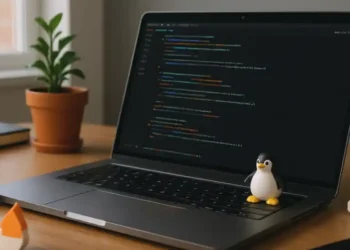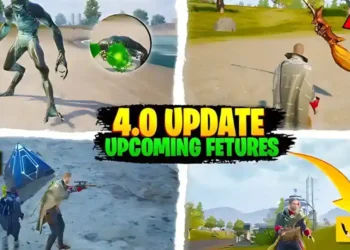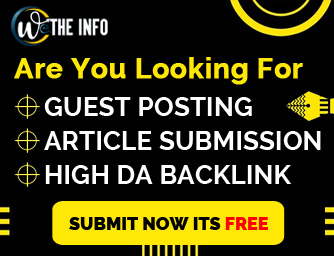Starting a blog is exciting but picking the right platform? Best Blogging Platform to Start in 2025. That can feel super overwhelming. I remember staring at a dozen tabs open on my browser, each promising to be “the best” platform ever. If you’re just getting started with your mental health or personal blog, you might be thinking: Do I need to code? Can I switch later? Will I be stuck forever?
In this guide, I’ll Walk you through the top blogging platforms for 2025, breaking them down in a real-life, simple way. We’ll look at the pros, cons, and how each one feels to actually use. Whether you’re writing to help others, share your story, or build a business you’ll find something that fits.
Let’s dive in and find your perfect match.
1. WordPress.org Best for Full Control & Growth
WordPress.org (not to be confused with WordPress.com) is like having your own house instead of renting an apartment. You have full control, from layout to plugins to ads.
You’ll need a bit of a learning curve at first, but once you get the hang of it, the possibilities are endless. For example, when I started my mental health blog, I used a drag-and-drop builder plugin that made design way less scary.
Pros:
- Full customization
- Thousands of themes and plugins
- Great for SEO and monetization
Cons:
- Requires hosting setup (like Bluehost or Site Ground)
- Can feel technical at the start
If you want long-term flexibility and plan to grow your blog seriously, WordPress.org is a solid bet.
2. Wix Great for Beginners Who Love Design
Wix is like Canva for websites. It’s beautiful, beginner-friendly, and gives you creative freedom without needing to code.
You just drag and drop blocks, play with fonts, and voilà you’ve got a site. I helped a friend launch her wellness blog on Wix in one weekend, and she loved the process.
Pros:
- Easy to use, no coding
- Stunning templates
- All-in-one hosting included
Cons:
- Less flexible than WordPress for SEO
- Can get expensive if you add features
If you’re more into the creative side and want an easy start, Wix is a lovely option.
Read More: 10 Latest Technology Trends 2025 That Will Change Everything
3. Squarespace Clean, Professional, and Easy
If you’re going for a minimalist, polished look, Squarespace is the way to go. It’s super popular among lifestyle and wellness bloggers for good reason.
The templates are gorgeous right out of the box. I tried it once for a side project and had a full website running in a single afternoon, no joke.
Pros:
- Beautiful, mobile-friendly templates
- All-in-one solution (hosting, design, SSL)
- Great customer support
Cons:
- Limited customization
- Less control over SEO settings
Ideal for bloggers who want things to look beautiful and just work with minimal fuss.
4. WordPress.com Low-Maintenance Option
Think of WordPress.com as the little sibling of WordPress.org. You don’t have to worry about hosting or updates; it’s all taken care of.
It’s great if you’re dipping your toes into blogging and not quite ready to commit to a full website yet. I actually started here before I moved to WordPress.org when I was ready to go bigger.
Pros:
- Simple to start
- Free basic plan
- No maintenance needed
Cons:
- Limited themes and plugins unless you upgrade
- “. wordpress.com” in your URL unless you pay
It’s perfect if you want to test blogging without feeling overwhelmed.
5. Ghost Clean and Built for Writers
Ghost is sleek, focused, and made for writers who care about clean design and speed. If you’re writing in-depth mental health pieces, Ghost lets your words shine.
It’s also privacy-friendly and fast, something I appreciate when I want fewer distractions.
Pros:
- Writer-focused interface
- Fast and lightweight
- Great for email newsletters and memberships
Cons:
- More expensive
- Less beginner-friendly than others
If writing is your main focus and you’re ready for a more serious, ad-free blog—Ghost might be for you.
6. Medium Best for Building an Audience Fast
Medium is like Instagram for writers. You focus on writing, and they take care of everything else.
If you just want to share stories and connect with readers especially around topics like self-care or recovery, Medium’s community is incredibly supportive.
Pros:
- Built-in audience
- No tech setup needed
- Clean reading experience
Cons:
- Limited design control
- Can’t monetize easily unless using their Partner Program
This is a great place to start writing without the pressure of building a website.
7. Substack Ideal for Blog + Email Combo
Substack is part blog, part newsletter. If you love the idea of writing to readers directly in their inbox, this is a powerful tool.
I subscribe to a few mental health creators on Substack, and I love how personal it feels.
Pros:
- Built-in email system
- Great for community building
- Monetization options via subscriptions
Cons:
- Not ideal for visuals or heavy blog design
- Less SEO visibility
Perfect for storytellers who want direct connection and loyal subscribers.
8. Blogger Old but Still Kicking
Blogger is Google’s free platform that’s been around forever. While it’s not the trendiest option anymore, it’s super simple and still works for basic blogs.
I actually started my very first journal-style blog on Blogger in college and it’s still there!
Pros:
- Totally free
- Google integration
- Easy for absolute beginners
Cons:
- Outdated templates
- Limited modern features
Use it if you just want to write without thinking about design or SEO.
9. Weebly Another Drag-and-Drop Option
Weebly is similar to Wix but with fewer bells and whistles. It’s simple, easy, and gives you what you need to get started.
It’s a solid choice for someone who wants a blog + basic site without overcomplicating things.
Pros:
- Very beginner-friendly
- Free and paid options
- E-commerce ready
Cons:
- Limited customization
- Slower to load compared to others
If you want something quick and simple, Weebly gets the job done.
10. Notion (with Super or Potion) Creative Blogging Setup
This one’s a bit outside the box! If you use Notion for organizing your life, you can turn those pages into a blog using tools like Super or Potion.
I’ve seen mental health writers use this setup for digital journals or minimalist blogs.
Pros:
- Unique and creative layout
- You already use Notion
- Great for digital organization and content
Cons:
- Not great for SEO
- Needs a third-party tool to publish
Fun for the tech-savvy or those who love Notion!
Conclusion:
Choosing a blogging platform can feel like a big deal but honestly, the best one is the one that helps you get started. You can always switch later. What matters most is your message, your voice, and your willingness to share it. Think about your needs: Do you want full control? Easy design? Built-in readers? Then match that with the platform that feels right.
Remember: Your words matter. Someone out there needs to read what you have to say.
Have you picked your platform yet?
Tell me in the comments or share this post with a friend who’s thinking of starting a blog!
FAQs:
1. What’s the easiest blogging platform for beginners?
Honestly, platforms like Wix and WordPress.com are great for beginners. They’re super user-friendly and don’t need any coding knowledge. You can drag and drop things into place and focus on writing rather than tech stuff.
2. Can I change blogging platforms later?
Yes! Many bloggers start on one platform and move to another as they grow. It might take a bit of effort to transfer content, but it’s totally doable. I started on WordPress.com and moved to WordPress.org later it was a bit technical, but worth it.
3. What platform is best for a mental health blog?
If you want full freedom and room to grow, WordPress.org is awesome. But if you prefer simplicity and beauty, Squarespace or Wix are great too. Medium is also perfect if you’re just looking to write and connect with readers quickly.
















Discussion about this post